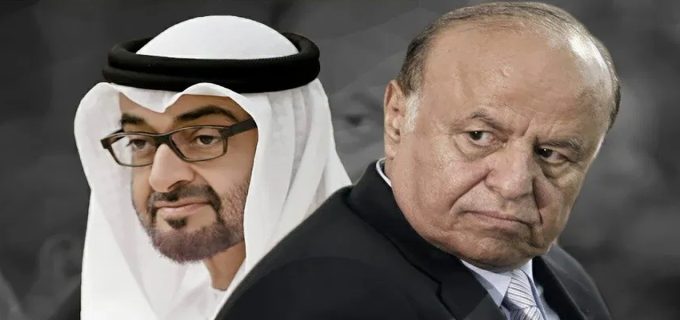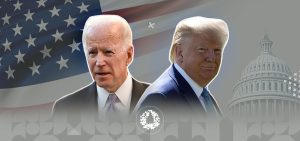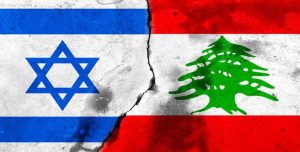The Yemeni government accused the UAE of being behind the military coup of the Southern Transitional Council (STC), which it supports, since 8 August. The coup led to the STC’s control over the camps and government institutions and the interim capital Aden, and the subsequent clashes in the governorates of Abyan and Shabwah, as well as the bombing of the government forces by UAE warplanes at the entrance to Aden on 28 August, while trying to regain control of the area. Meanwhile, Saudi Arabia called for a dialogue in the city of Jeddah, between what it considered the conflicting parties and the Yemeni government.
A study of the repercussions of the military confrontations in the interim capital of Aden and the governorates of Abyan and Shabwah will be provided, in addition to prospecting the possibility of a dialogue between the Yemeni government and the UAE-backed STC, and the nature of the Saudi and Emirati role in south of Yemen.
Context of events
While the Yemeni government was working to normalize the situation, provide services in the interim capital of Aden and stabilize its presence, and in light of the demand for the convening of the House of Representatives meetings in the interim capital, Abu Dhabi was seeking to strengthen the influence of armed groups (the STC) in order to enforce the separation of southern Yemen from the north by force.
On 8 August, 2019, the STC armed groups attacked camps and government institutions aiming to overthrow and control them. This was the second attempt as it had been preceded by an attempt in January 2018. This escalation comes after the Houthi movement (Ansar Allah) bombed a military parade of separatists, On 1 August, 2019, which led to the death of Munir Mahmoud Ahmad al-Mashali, known as Abu Yamamah al-Yafaei, commander of the UAE-backed Security Belt Forces. Although the Houthi group adopted and boasted the operation as a military achievement, the STC vice president, Hani Ali Brik, called, on 7 August, 2019, supporters to head to Maasheq Presidential Palace and expel what he called the government of corruption and Al-Islah Party, which supports the legitimate government.
Following the STC militia’s control over Aden on 10 August, the insurgency spread to Abyan and Shabwah governorates on 20 and 21 of the same month, where elite forces from the UAE-backed STC besieged Ataq, the capital of Shabwah, and gave government forces 24 hours to hand over their camps. After the failure of the mediation efforts, government forces were able to win the battle that marked the beginning of the shift in the balance of power in favor of the legitimate government, as it managed to tighten control over Shabwah (22-25 August), which was mostly controlled by the UAE-backed separatist militias, stationing in seven military camps. Government forces were able to recapture Abyan governorate within a short period of time (August 26-28) and reach the temporary capital of Aden, where they faced limited resistance. This has prompted Emirati aircraft to bomb government forces on 28 August, which led to killing and wounding 300 fighters, while triggering a major crisis in the already tense relations between the Yemeni government and the UAE, and caused embarrassment and a major challenge for Saudi Arabia.
Geography of influence and control
The southern and eastern governorates that constituted the People’s Democratic Republic of Yemen in the past, before the re-establishment of unity in May 1990 with the northern part (Yemen Arab Republic); currently consist of eight governorates instead of six before the unity, namely: Aden, Lahij, Abyan, Shabwa, Hadramaut and Mahra, in addition to the governorates of Dhale and Socotra, which have been declared in recent years.
The legitimate government controls Shabwa, Mahra, Hadramout and some districts of Abyan. Government forces are stationed in the coastal district of Shakra and around Zinjibar near Aden, while the Socotra governorate remains under government authority despite the UAE’s attempt to eliminate government influence in there. These governorates contain the most important sources of energy and wealth.
On the other hand, separatists (the UAE-backed STC) control the city of Aden, the interim capital of Yemen, the governorates of Lahij and Dhale and the city of Zanjibar, the administrative centre of Abyan governorate, which is adjacent to Aden. The military presence of the UAE should be noted especially in the city of al-Mukalla, the capital of the governorate of Hadramout, and the island of Socotra, in addition to its central presence in the areas controlled by the separatists, mainly Aden.
Saudi forces are symbolically present in Aden; however, their military focus is on Mahra, which neighbours Saudi Arabia and the Sultanate of Oman, and some areas of Hadramaut and Shabwah. The Saudi forces have traditionally replaced the UAE when they are demanded to take them out of a particular area, as in Socotra.
International attitudes towards the events of Aden
On 29 August, 2019, the Yemeni government submitted a formal complaint to the UN Security Council condemning the UAE’s bombing of its forces in Aden and Zanjibar, and demanding a special session to discuss what it described as the UAE attacks and interventions in Yemen. Although international positions as a whole are committed to supporting the Yemeni government and the unity of the Yemeni State and calling for an end to the war, the poor handling of Yemen’s complaint to the UN Security Council against the UAE may indicate that the permanent members of the Council are still waiting for the outcome of Saudi efforts regarding the settlement. The most prominent position was that of the Russians who condemned the bombing of the Yemeni government forces by the United Arab Emirates, while Qatari Foreign Minister Mohammed bin Abdulrahman Al Thani called on all parties to stop the war and not to “tear the social fabric.”
At the popular level, there is increasing tension regarding the UAE’s role which threatens Yemen’s unity. Many demonstrations have been organized in front of the UAE embassies and missions, as well as in some liberated areas in Yemen, while interactions via social media reached their peak in demanding the expulsion of the UAE from the coalition and prosecuting UAE’s officials for war crimes. The separatist voices, on the other hand, did not hesitate to express support for the UAE, albeit limited.
Saudi position
Saudi Arabia is constantly renewing its support for the Yemeni government, the legitimacy of President Abed Rabbo Mansour, and the unity of the Yemeni state; however, its practical position on the demands of the Yemeni government condemning the negative interventions practiced by the UAE in southern Yemen, and the end of its participation in the coalition, are both oscillating and mixed. Nevertheless, such stance is pressing the Yemeni government to accept the UAE as part of the alliance.
The discrepancy in the official position of Saudi Arabia appeared in the statement issued separately on 5 September, then the joint statement with the UAE. The language of the first statement seemed clear and strong, while rejecting the escalation practiced by the STC- without naming it – in the southern governorates, and all consequent implications. The Saudi kingdom included its assertion of the Yemeni government’s need to fully restore all institutions and camps, and its keenness on the stability of Yemen, considering that any threat to the stability of Yemen is also a threat to the security and stability of Saudi Arabia.
While the Yemeni government hastened to welcome the statement in full and in detail, the STC and the UAE declined to comment on it. Later, the STC hastened to welcome the joint statement issued by Saudi Arabia and the United Arab Emirates, as the content of which differed greatly from the unilateral Saudi statement. The Saudi Council of Ministers stressed the content of the joint statement, while expressing the Saudi authorities’ assurance of “the response of the legitimate government and the STC to the Kingdom’s call for dialogue.”
The joint statement called on the Yemeni government and the STC to engage in a mutual dialogue and to stop any combat operations, which proves the extent of the STC’s control over the Yemeni scene, impeding the government’s efforts to regain control of the interim capital Aden. Hence, the Saudi-Emirati statement was interpreted as a threat to bombard the troops again in case of repeating the attack.
The divergent Saudi position may stem from keenness to maintain the coalition and perhaps having some consensus with the UAE and deliberately avoiding the crises according to the Saudi authorities’ priorities.
UAE Position
The UAE bombing of Yemeni government forces has revealed its readiness to use force under the pretext of fighting terrorism. As such, the UAE justified its attacks on the Yemeni army as targeting terrorist groups that endangered the presence of coalition forces in Aden.
The UAE linked its military presence in Yemen to Saudi Arabia’s request, and therefore does not recognize the Yemeni government’s position. The UAE rather accuses it of helplessness and corruption, in a letter to the UN Security Council members in response to Yemen’s complaint, while expressing its overt support for the separatists.
Since its military intervention as a member of the Saudi-led coalition in early 2015, the UAE has consistently rejected the return of the Yemeni President to Aden, prevented the convening of the House of Representatives and hindered the government’s effort to activate state institutions and resources. The Emiratis have been able to strengthen their presence using military and soft tools, in addition to attempting to appoint some senior officials.
The UAE is the first militarily force which is present and active in the interim capital of Aden, as Emirati officials boasted of training 90.000 fighters. Similarly, the UAE has supported initiatives to end the role of Yemeni President Abd Rabbu Mansour Hadi more than once, and did not hesitate to express its interests and positions in support of the STC logistically and politically, while targeting Al Islah Party repeatedly.
Future of the crisis
On the basis of the above information and analysis, the chances of the next three scenarios appear to be close, albeit combining temporary and unstable characteristics due to the imbalances of power and the dynamics of the conflict in the region. Saudi-UAE relations and the nature of the Yemeni president’s position on the UAE’s role are the most important determinants of the future of the conflict in southern Yemen.
• First Scenario: Tensions between UAE and Yemeni government continue, with STC’s control in and around Aden strengthened
This scenario assumes that tensions between the Yemeni government and the UAE will remain, thus strengthening the STC’s control of Aden and its surroundings without progress or retreat, at least in the next few months. This necessarily means the stability of the Saudi position of holding the stick in the middle, adhering to dialogue between the two parties and calling for an end to the military escalation, while maintaining the representation of the government of President Abed Rabbo Mansour in the international community.
This scenario supports the weak ability of government forces or separatist factions to resolve the conflict militarily, in addition to the Saudi-led coalition’s need for the legitimacy of the Yemeni government before the international community, and Riyadh’s need for Abu Dhabi to remain in the coalition.
This scenario is weakened by the lack of agreement to ensure the continuation of the truce vis a vis the great divergence in the objectives of the conflicting parties, and their quest for expansion and control of Yemeni regions, in addition to the UAE’s strong support for separatists. Besides, the state enfeeblement dominating the coordination between Riyadh and Abu Dhabi may increase in the next stage, especially in case Riyadh becomes more certain of the cooperation between Abu Dhabi, Tehran and its allies in Yemen.
• Second scenario: Escalation and resumption of military confrontation
This scenario foresees a resumption of clashes between government forces and separatist factions, and the lack of chances of reaching an agreement between the government and the STC as a result of its disagreement with the UAE, which will hinder the legitimate government return to exercise its powers from Aden. Similarly, it is improbable that the government would accept to stay outside the interim capital. On the other hand, the STC and the UAE behind it will try to impose their control on the rest of the southern governorates.
This scenario reinforces the continuation of preparations for the coming confrontations, as government forces in the districts of Abyan governorate and the outskirts of Shabwah are mobilized to go to Aden when they receive the directives. In return, the UAE withdrew a number of local factions, which the Emirati authorities have armed previously, to Aden and Zanjibar, and pushed more armored and military vehicles in support of its separatist allies.
Another indication of the reliability of this scenario is Saudi Arabia’s inability to conclude an agreement between the Yemeni government and the UAE-backed separatists as a result of drastic differences in the interests and objectives of the conflicting parties, as well as the popular tension, regional mobilization and the ambiguity of the Saudi position, as opposed to the clarity of the UAE’s supportive position. The UAE has become a hostile party to the Yemeni government, competing to control lands and preventing the legitimate government from being present in those areas and exercising its sovereignty, in addition to providing military support to the STC constantly.
The last indicator is related to the weakness or absence of international pressure on the Yemeni government and the STC, on the one hand, and on the conflicting regional states to stop their intervention, and pressure on the local parties to reach an agreement among them according to the international authorities, on the other.
• Third Scenario: Yemeni government engages into settlement with STC
This scenario assumes that the Yemeni president and his government are under pressure and would accept a settlement with the STC, which is considered by the government as a rebel entity and it rejects direct dialogue with it for being an ally of the UAE, which does not represent the file of the southern region. As for the ceiling and outputs of this dialogue, these could be as follows:
1- According to the conditions of the UAE and its attempt to strengthen its allies in their areas of control, this depends on the position of the legitimate government and Riyadh’s assessment of this situation regarding the conflict with Iran and its allies in northern Yemen.
2. Imposing the legitimate government’s conditions and the return of its ministers and forces to its former headquarters. Hence, the ceiling of legitimate government’s demands may rise further, especially in case Riyadh felt the seriousness of the situation in Yemen and its repercussions on its national security and vital interests.
3. Reconciling the demands of the Yemeni government with those of the UAE, i.e. the return of the government to its headquarters in Aden, while granting the allies of the UAE (the STC) local rule over the governorates under its controls currently, Aden and its environs.
This scenario has four limitations:
– The ability of the legitimate government to withstand pressure and international coordination as well as making use of its legal and military options.
– Saudi assessment of the situation in the south and its relationship to its security and interests as well as to the balance of conflict with Iran.
– The international position and objectives in Yemen, which is represented by the steps taken by the UN envoy.
– The ability of the UAE to boost rapprochement between the STC, Saudi Arabia and the international community, in addition to the fact that the nature of the transitional rule during the next phase will determine a popular and international stance towards the issue.
This scenario weakens the government’s awareness of the serious repercussions of any agreement with the STC, as it will formally and temporarily legitimize the separatists’ control over the regions and state institutions as well as its expansion over other governorates. On the other hand, it will ease the pressure on the Houthis in the capital Sanaa. Additionally, the international prerogatives that the STC will gain may be reflected on the Houthi movement also; thus, the legitimate government’s presence in the north and the south will meet an end, despite keeping it formally at the beginning.







